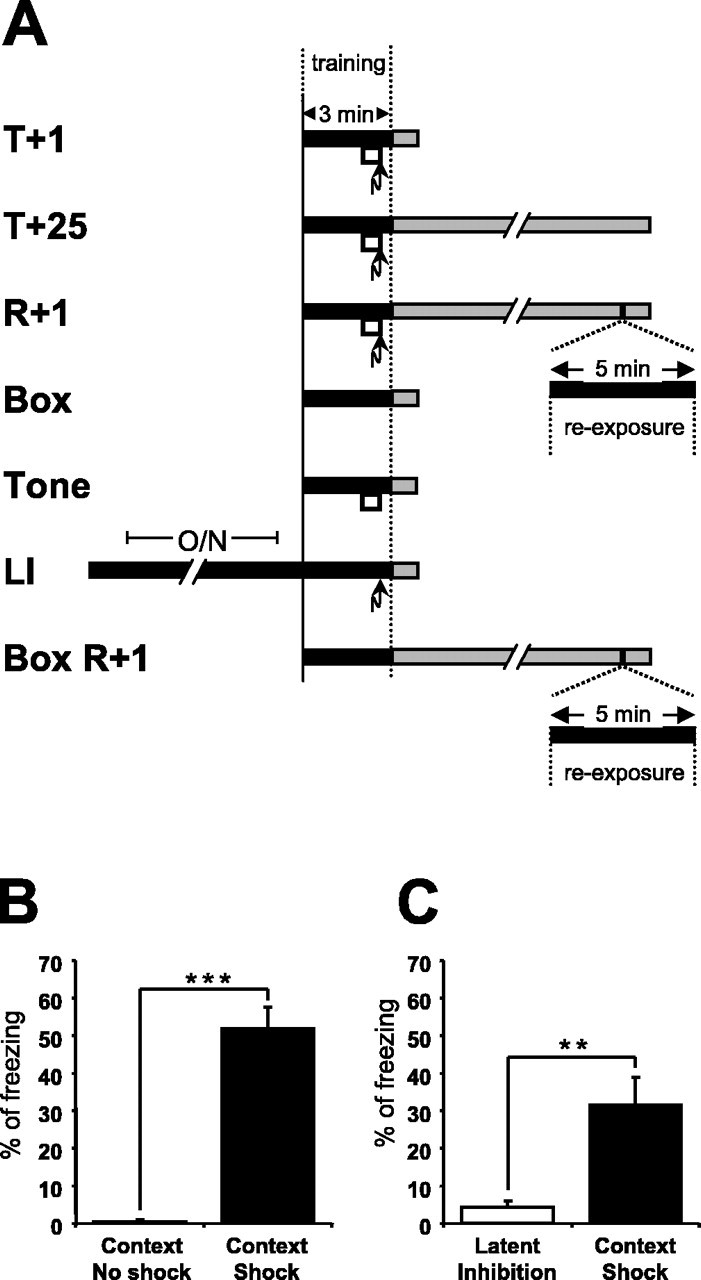Figure 1.

Experimental design and contextual freezing scores. A, Experimental design to investigate changes in hippocampal mRNA expression induced by contextual fear conditioning. The black boxes indicate exposure to the training context, the white boxes represent a 30 s tone, the arrows indicate the foot shock, and the gray boxes show the time until the animals were killed. The following groups were studied: T+1, trained and killed 1 h after training; T+25, trained and killed 25 h after training; R+1, trained, reexposed 24 h after training and killed 1 h after reexposure; Box, exposed to training context and killed 1 h after exposure; Tone, exposed to the training context with a 30 s tone and killed 1 h after exposure; LI, LI control, mice were housed overnight (O/N) in the training context, shocked in the morning, and killed 1 h after the shock; Box R+1, exposed twice to the training context (interval, 24 h) and killed 1 h after the second exposure. B, Two exposures to the context without conditioning did not evoke a freezing response (Box R+1). The freezing score during a second exposure, 24 h after the first exposure, is shown. Contextual fear conditioning induced freezing to context 24 h after training (R+1) (ncontext no shock = 6; ncontext shock = 10). Data are means ± SEM; ***p < 0.001. C, Housing the mice O/N in the training context, the LI protocol, significantly prevented an association between the foot shock and the context as indicated by reduced contextual freezing 24 h after the foot shock (nlatent inhibition = 6; ncontext shock = 6). Data are means ± SEM; **p < 0.01.
